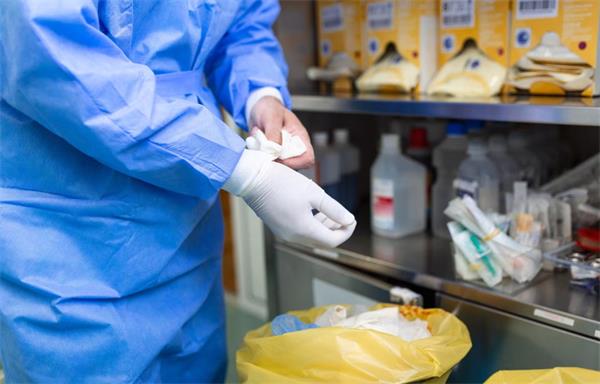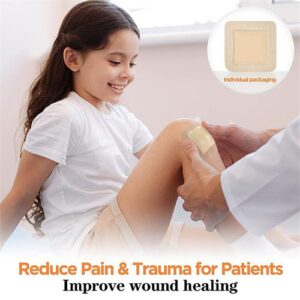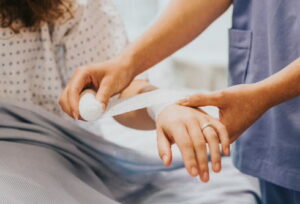Are you aware that improper disposal of medical waste and sharps can lead to serious health risks? According to the World Health Organization, needlestick injuries alone result in over 1.3 million deaths each year. To prevent this, it’s crucial to use the right sharps container and follow best practices for proper disposal.
In this blog post, we’ll provide you with 10 essential tips to help you choose the best medical sharps container and keep yourself and others safe from needlestick injuries and other medical waste risks.
What is a sharps container?
A sharps container, also called a sharp box, is a specially designed container used for the safe and proper disposal of medical sharps and medical waste in hospitals. Medical sharps are any objects that can pierce the skin and include items such as needles, syringes, lancets, scalpels, and other sharp medical instruments.

Disposable Sharps containers are made of durable, puncture-resistant materials that prevent sharps from accidentally puncturing the container or leaking out. These containers come in a variety of sizes and designs to accommodate different types and amounts of sharps waste.
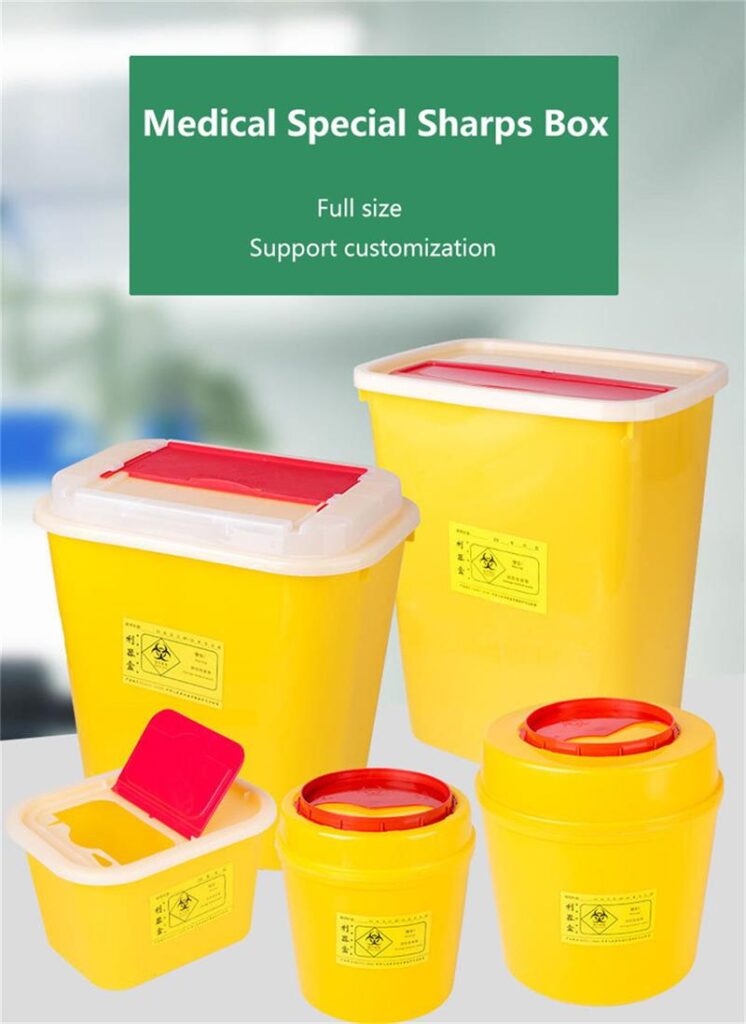
Proper disposal of sharps waste is essential to protect public health and the environment. Sharps that are not disposed of properly can pose a risk of injury and transmission of infectious diseases, such as hepatitis B and C, and HIV. The use of sharps containers ensures that sharps waste is contained safely and disposed of in a manner that minimizes the risk of injury or infection.
Examples of sharps containers include wall-mounted containers, countertop containers, and portable containers that can be carried by healthcare workers. Sharps containers also come with different features such as locking mechanisms to prevent unauthorized access and visual indicators to show when the container is full and needs to be replaced. Proper use and disposal of sharps containers are crucial to maintaining a safe and healthy environment in healthcare facilities and households.
Use Method
Placement of the disposable sharps container
Proper placement of sharps containers is crucial to ensure their effectiveness in preventing injury and contamination. The containers should be placed in a convenient location that is easily accessible, preferably at a height of 132-142 cm from the ground and 28-48 cm from the operator’s body. It is essential to avoid placing the container on the ground or lower part of a vehicle to prevent damage to the container or accidental needlestick injuries.
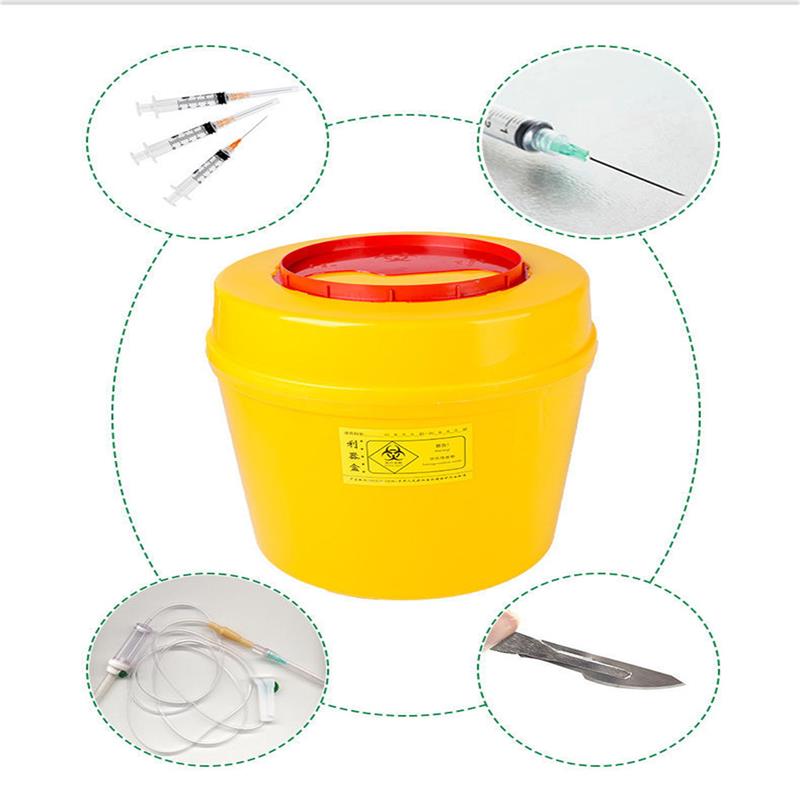
Handling and disposal of sharp objects
When handling sharp objects such as needles, it is crucial to exercise caution to prevent accidental injuries. Needles should be separated from the syringe by using the wedge-shaped slot on the lid, and the used syringe or exposed needle should not be disassembled or separated by hand.
When disposing of sharps, the content of the sharp container should not exceed 3/4 of the marked capacity, and when it reaches 3/4 full, it should be replaced immediately and sealed with an effective sealing method, such as sealing the packaging or container tightly.
Transporting and storing the sharps container
Before disposal, the sharp collection container should immediately be transported and stored in a fixed safe area to prevent accidents or contamination. If the sharps container contains infectious materials, it should be properly sealed to prevent contamination during transportation. It is important to handle the container with care and avoid dropping or damaging it.
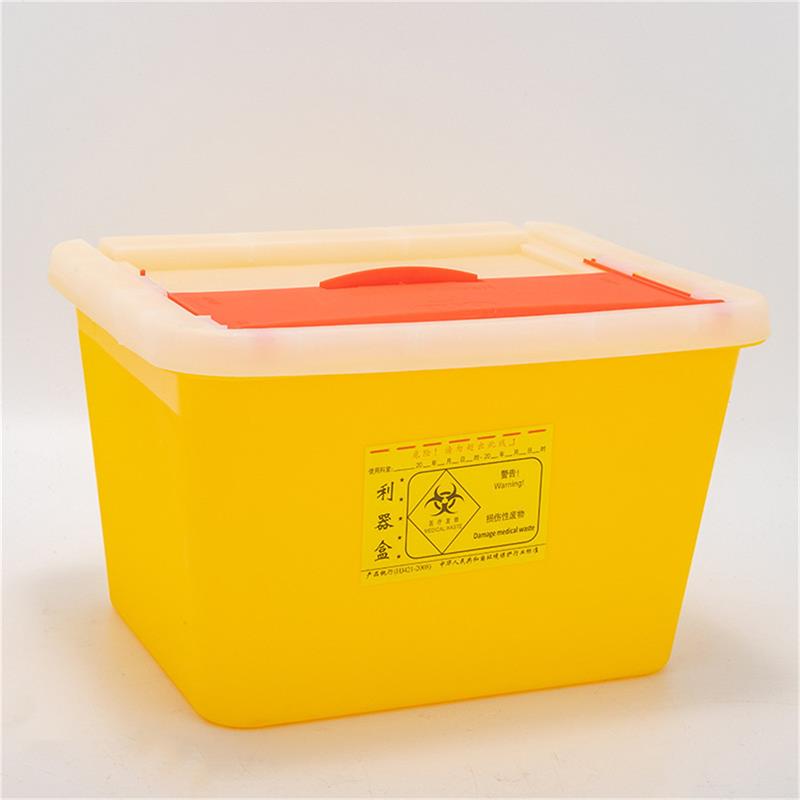
Sealing and disposing of the sharps container
Once the sharps box is full, it should be sealed with an effective sealing method, such as sealing the packaging or container tightly. The sharps container is made of new polypropylene material, does not contain PVC, is convenient, safe, puncture-resistant, leak-proof, and easy to incinerate at high temperatures.
It is essential to dispose of the sharps container within 24 hours of use, and it must be safely incinerated within 48 hours. Improper disposal of sharps containers can lead to contamination, injuries, and legal consequences.
Use Specifications
Material requirements for sharps containers:
- Sharps containers made of plastic can be easily melted during incineration, releasing harmful fumes into the environment.
- Metal sharps containers are durable and puncture-resistant but can be heavier and more expensive.
- Some companies are now using sustainable materials such as bamboo or biodegradable plastics to create eco-friendly sharps containers. companies are now using sustainable materials such as bamboo or biodegradable plastics to create eco-friendly sharps containers
Capacity and labeling requirements:
- Hospitals and other healthcare facilities must comply with state and federal regulations regarding the capacity and labeling of sharps containers.
- Failure to comply with these regulations can result in fines and legal consequences.
- For example, in 2019, a California hospital was fined $75,000 for improper handling and disposal of hazardous waste, including sharps.
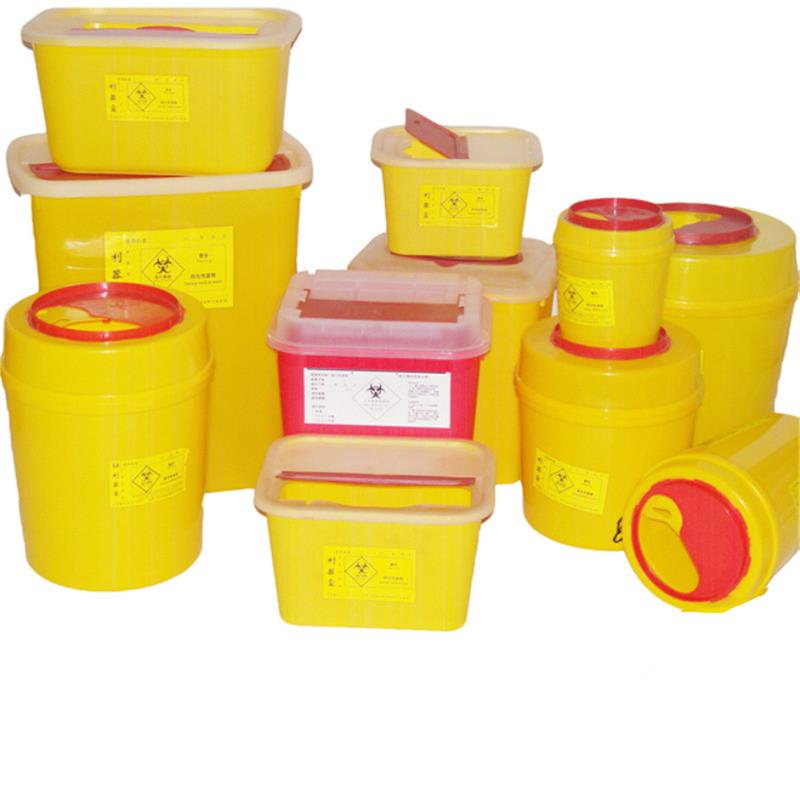
Puncture resistance and leak-proofing specifications:
- Sharps containers must be puncture-resistant to prevent needlesticks and other injuries to healthcare workers.
- They must also be leak-proof to prevent the spread of infectious diseases and contamination of the environment.
- In 2013, a Virginia hospital was fined $8,000 for improperly disposing of sharps containers that were not leak-proof, leading to contaminated waste being spread throughout the hospital.
Temperature and incineration requirements:
- Sharps containers must be able to withstand high temperatures during incineration without releasing harmful fumes or contaminants.
- In some states, incineration is the only accepted method of disposal for sharps containers.
- In 2018, a New Jersey hospital was fined $25,000 for improperly disposing of sharps containers that were not incinerated at the required temperature, leading to the release of hazardous waste into the environment.
One-time use and disposal regulations:
- Sharps containers must be designed for one-time use only and should not be reused or refilled.
- Once full, sharps containers must be disposed of properly according to state and federal regulations.
- In 2016, a Florida healthcare facility was fined $8,000 for reusing sharps containers, leading to potential exposure to infectious diseases for healthcare workers and patients.
I hope these examples provide a better understanding of the importance of adhering to the user specifications for sharps containers.
Tip 1: Determine Your Needs
Assess Your Sharps Disposal Needs:
Before purchasing a sharps disposal box, it is important to determine your specific needs. One way to do this is to consider the volume and frequency of sharps disposal required in your facility. For example, a hospital may require a larger sharps disposal container, with a higher capacity than a small clinic.
Other factors to consider include the types of sharps being disposed of and any applicable regulations or guidelines. By evaluating your needs, you can choose a sharps disposal container that is appropriate for your facility and helps ensure the safe and proper disposal of sharps.
Consider the Size and Capacity:
Once you have assessed your needs, you can choose the appropriate size and capacity of a disposable sharps container. Sharps containers are available in various sizes and capacities, ranging from small portable containers to larger wall-mounted units. The size and capacity needed will depend on the volume and frequency of sharps disposal required in your facility.
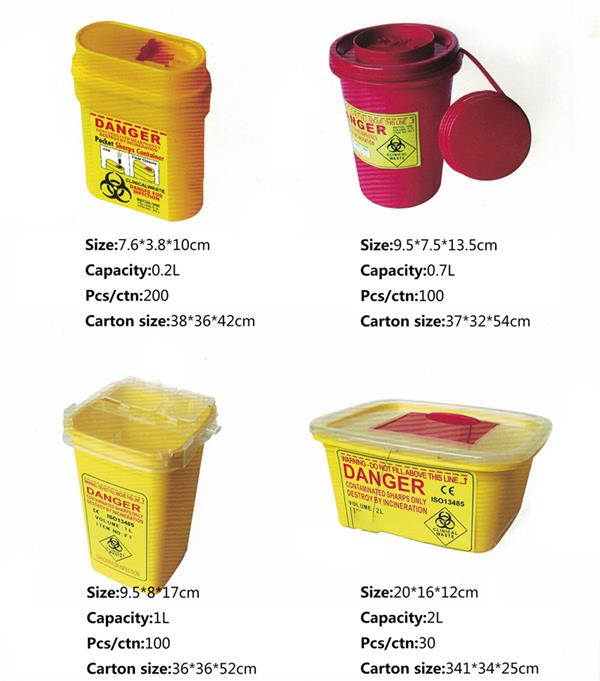
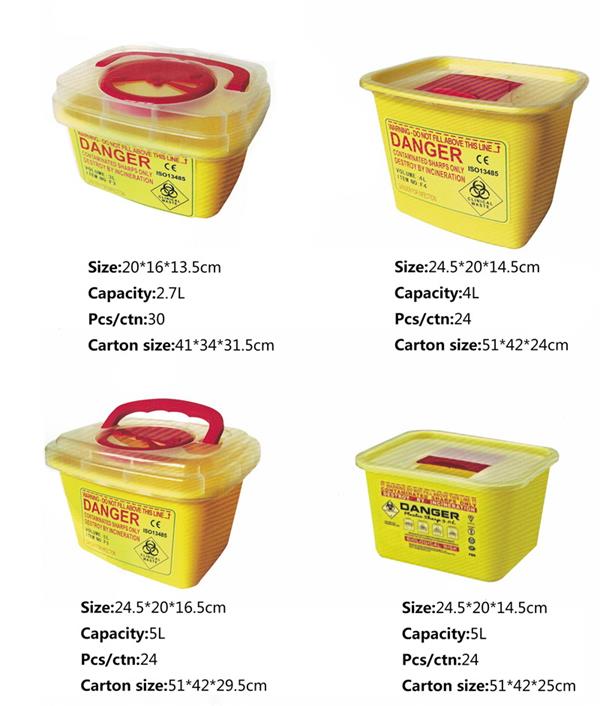
For instance, a small clinic may only need a 1-2 quart container, while a hospital may require a 10-15 gallon container. It is important to choose a container with a capacity that is suitable for your needs to ensure efficient and safe sharps disposal.
Tip 2: Choose the Right Material
Comparison of Common Sharps Container Materials
When it comes to choosing a sharps collection container, one important factor to consider is the material it’s made of. The most common materials used for sharps containers include plastic, glass, and metal.
Plastic sharps containers are the most popular choice due to their durability, affordability, and ease of use. They are often made of high-density polyethylene (HDPE) or polypropylene (PP), which are resistant to punctures and leaks. These containers come in a variety of sizes, shapes, and colors to meet different sharps disposal containers’ needs.
Glass sharps containers are less commonly used, but they are preferred in some settings due to their transparency and ease of sterilization. Also, glass sharps containers are a better option for the safe disposal of sharps. Their durability, ease of sterilization, and chemical resistance make them a popular choice in laboratory and medical settings.
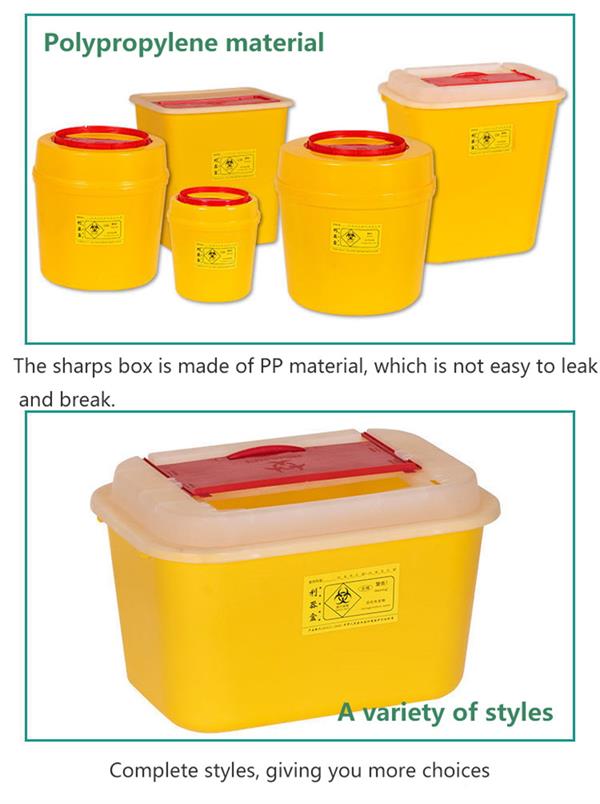
Metal sharps containers are another option, but they are less commonly used due to their higher cost and heavier weight. They are often made of stainless steel or aluminum and are preferred in settings where there is a high risk of fire or where sharps may come into contact with heat sources. For example, metal sharps containers may be used in industrial settings or in operating rooms where surgical instruments are being sterilized.
Advantages and Disadvantages of Each Material
Each type of sharps container material has its own advantages and disadvantages. Plastic containers are the most popular due to their affordability and durability, but they may not be suitable for certain settings where heat resistance is important.
Glass containers are transparent and easy to sterilize, but they are more fragile and may not be suitable for high-impact environments. Metal containers are durable and heat-resistant, but they are more expensive and may not be suitable for all settings.
Ultimately, the choice of material depends on the specific needs of the user and the disposal environment. For example, if you’re a healthcare worker who frequently handles sharps and needs a container that can withstand autoclaving, a glass container may be the best option. On the other hand, if you’re a tattoo artist who needs a durable, affordable container that can be easily disposed of, a plastic container may be the better choice.
Tip 3: Look for Puncture Resistance
Importance of puncture-resistant containers
Puncture resistance is a critical feature to consider when choosing a sharps collection container. Sharp waste can contain needles, scalpels, or other sharp objects that can pierce through a container if it is not puncture-resistant. This can pose a significant risk of exposure to healthcare professionals, waste handlers, and the general public.
For instance, a hospital in Texas was fined $8,000 for violating the Occupational Safety and Health Administration’s (OSHA) Bloodborne Pathogens standard, which requires that sharps waste be disposed of in puncture-resistant containers. In this case, a maintenance worker was pricked with a used needle that had been improperly disposed of in a non-puncture-resistant trash container.
Description of materials and features that provide puncture resistance
Some several materials and features can provide puncture resistance to sharps containers, including:
Heavy-duty plastic – Sharps containers made of heavy-duty plastic are highly durable and puncture-resistant. They are often used in hospitals, clinics, call centers, and other healthcare facilities.
Steel – Steel sharps containers are commonly used in medical facilities and laboratories. They are highly durable and can withstand punctures from sharps waste.
Tamper-proof lids – Sharps containers with tamper-proof lids provide an added layer of protection against accidental needlestick injuries. These lids are designed to prevent unauthorized access to the container’s contents.
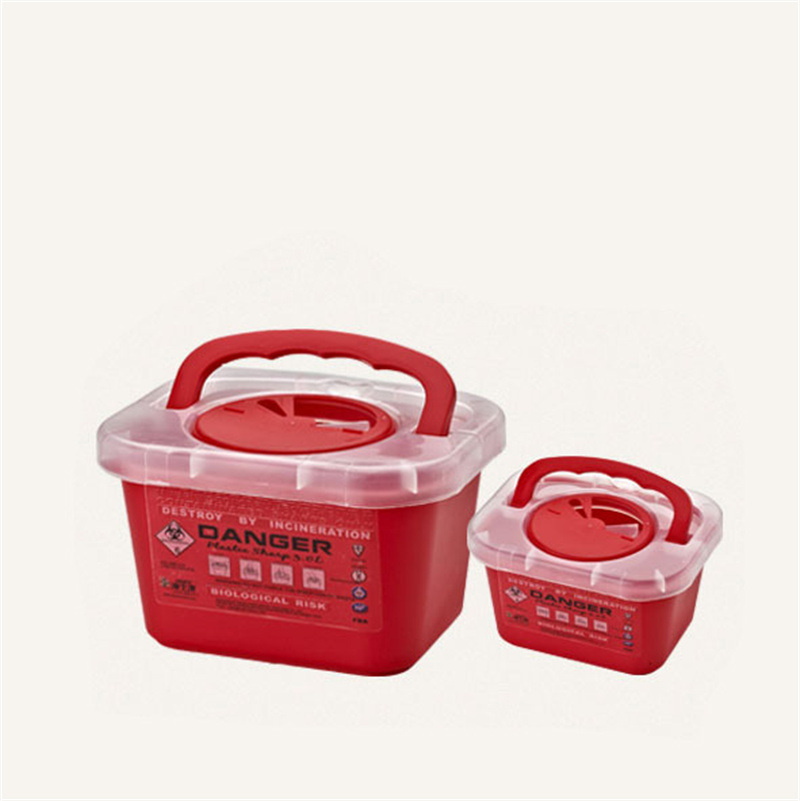
Locking mechanisms – Sharps containers and devices with locking mechanisms are ideal for environments where the risk of theft or tampering is high. These containers require a key or combination to open, ensuring that only authorized personnel can access the contents.
By choosing a sharps container with puncture-resistant materials and features, you can reduce the risk of needlestick injuries and ensure the safe and proper disposal of sharps waste.
Tip 4: Consider Accessibility and Convenience
Placement and accessibility considerations
When choosing a sharps container, it’s important to consider where it will be placed and how easily accessible it is. For example, if the sharps container is going to be used in a hospital or clinic setting, it may need to be located in areas where medical staff can quickly access it. In a home setting, it’s important to choose a location that is easy for the user to access but out of reach of children and pets.
Additionally, the location should be well-lit, dry, and at room temperature to ensure the safety and effectiveness of the sharps container.

Features to look for to ensure convenient and safe trash disposal
When considering the convenience of a sharps container, there are several features to look for. First, it’s important to choose a container with a wide opening for easy and safe disposal of sharps. Some sharps disposal containers also come with a built-in mechanism to prevent accidental needlesticks, such as a locking lid or a sliding shield.
Additionally, some containers come with additional features such as wall mounts, carrying handles, or built-in disposal indicators to help ensure that the sharps disposal container is being used correctly and safely.
Tip 5: Check for Leak-Proofing
Explanation of leak-proofing importance:
One of the most crucial considerations when choosing a sharps container is leak-proofing. This feature is essential to protect against exposure to infectious substances and to prevent accidental spills during transport or disposal.
For example, if you have a clinic that frequently deals with large volumes of sharps waste, such as needles and syringes, a leak-proof container made of heavy-duty plastic or metal can be an excellent choice. These materials are durable and can withstand the pressure from sharp objects without cracking or breaking.
Materials and features that prevent leaks:
Several materials and features can help prevent leaks in sharps containers. For instance, containers made of high-density polypropylene (HDPE) are leak-resistant and can withstand punctures and tears.
Additionally, some medical sharps containers have a locking mechanism that ensures a tight seal, preventing leaks. For example, some containers have a sliding lid that locks automatically when the container is full, while others have a locking top that requires a key to open. Finally, it’s important to choose a container that is appropriately sized to prevent overfilling, as this can cause leaks and increase the risk of accidental exposure.
Tip 6: Capacity and Labeling Requirements
Capacity and labeling regulations for sharps containers vary by state and country
In the United States, the Occupational Safety and Health Administration (OSHA) requires that sharps containers be labeled with the biohazard symbol and the word “Biohazard” or “Infectious Waste”. Additionally, they must be leak-proof and puncture-resistant, and have a tight-fitting lid. The container should also be large enough to accommodate the anticipated volume of sharps generated. For example, a hospital might need a 5-quart sharps container for each patient room, while a small doctor’s office might only need a 1-quart container.
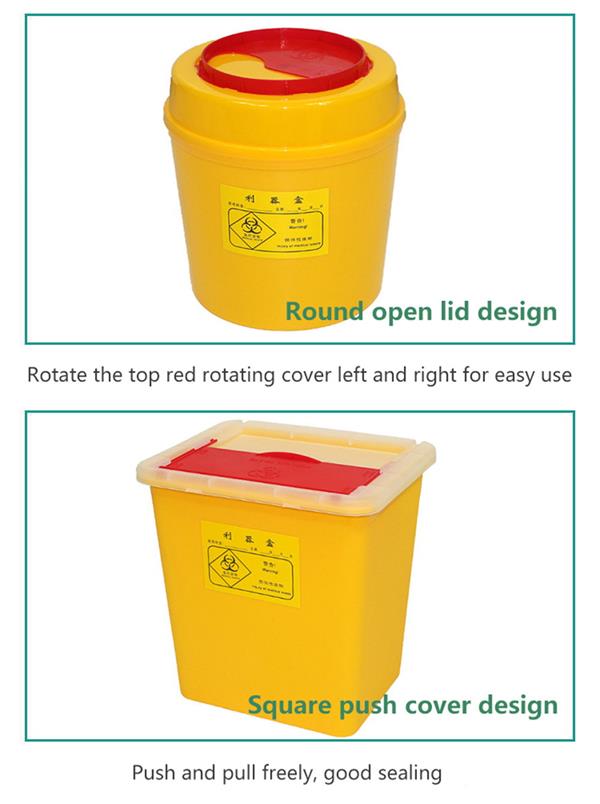
Proper labeling and capacity compliance is important for several reasons
First, it helps ensure that anyone who handles the sharps container knows that it contains biohazardous waste and needs to be handled with care. This can help prevent accidental needlesticks and other injuries.
Second, proper labeling and capacity compliance are required by law, and failure to comply can result in fines and penalties.
Finally, proper labeling and capacity compliance help ensure that the sharps container is emptied and disposed of promptly, reducing the risk of contamination and infection. For example, if a 1-quart container is used in a hospital room that generates a large volume of sharps, it may need to be emptied more frequently than a larger container, increasing the risk of accidental exposure to infectious materials.
Tip 7: Temperature and Incineration Requirements
A. Proper temperature and incineration requirements are crucial to ensuring safe and effective disposal of sharps waste. It is important to understand and comply with regulations regarding the appropriate temperature range for incineration, as well as any specific requirements for the disposal of different types of sharps. Failure to adhere to these regulations and procedures can result in safety hazards for those handling the waste, as well as environmental harm.
B. When choosing a sharps container, it is important to consider the materials and features that allow for safe and effective incineration. Some materials, such as PVC, can release harmful emissions when incinerated, while other materials, such as polypropylene, are designed to burn cleanly and with minimal impact on the environment.
Additionally, some containers may have features such as locking lids or reinforced walls to ensure safe transportation and incineration of the waste. It is important to carefully research and choose a container that meets all necessary temperature and incineration requirements to ensure the safe and effective disposal of sharps waste.
Tip 8: Durability and Longevity
A. When selecting a sharps container, it is important to consider the features that promote durability and longevity. Sharps containers should be made of durable materials that can withstand the intended use and potential hazards associated with their disposal.
Some key features to look for include thick walls, secure lids, and leak-proof construction. Additionally, containers that are resistant to punctures and impact can help ensure their longevity and reduce the risk of accidental exposure.
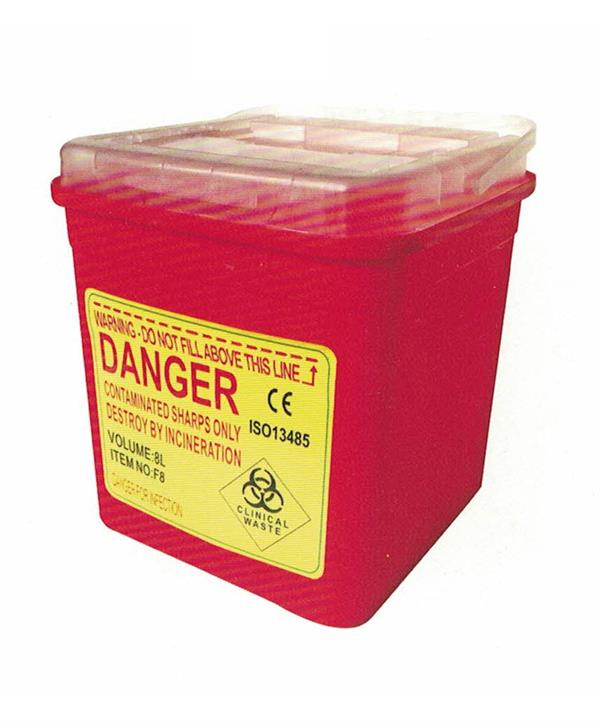
B. Selecting a sharps container that can withstand the intended use is crucial for ensuring the safe disposal of sharps. For example, if the container will be used in a high-traffic area with a large volume of sharps, a larger, more durable container with a secure lid may be necessary.
On the other hand, if the container will only be used occasionally or by a single individual, a smaller, more compact container may suffice. It is also important to consider the frequency of disposal and the expected lifespan of the container. Choosing a high-quality, durable sharps container can help prevent the need for frequent replacements, saving both time and money in the long run.
Tip 9: Ease of Use and Maintenance
A. When selecting a sharps container, it is important to consider features that promote ease of use and maintenance. Some features to look for include a wide opening for easy disposal of sharps, a secure lid to prevent accidental exposure, and a stable base to prevent tipping over.
Additionally, some containers come with built-in handles for easy transport, while others may have locking mechanisms to prevent unauthorized access. All of these features can help make the container more user-friendly and easier to maintain over time.
B. Proper maintenance of a sharps container is essential for safe and effective disposal of sharps. This includes regularly inspecting the container for damage or leaks, as well as ensuring that the lid is securely in place at all times.
Some sharps disposal containers may require additional steps for proper disposal, such as sealing the container before transport or labeling the container with important information. By following these guidelines and properly maintaining the sharps disposal container yourself, you can help ensure that sharps are safely and effectively disposed of.

We highly recommend JINYE’s sharps containers for their durability, leak-proof design, and ease of use. JINYE’s containers also comply with all applicable regulations, ensuring the safe and proper disposal of sharps. Additionally, JINYE offers competitive prices and excellent customer service, making it a top choice for healthcare and healthcare providers, businesses, and individuals in need of sharps containers.
When it comes to selecting a sharps container for your facility, it’s important to consider various factors, including capacity, durability, convenience, safety, and cost-effectiveness. There are many brands available on the market, but as a representative of JINYE, I would like to recommend some of our products that meet these criteria.
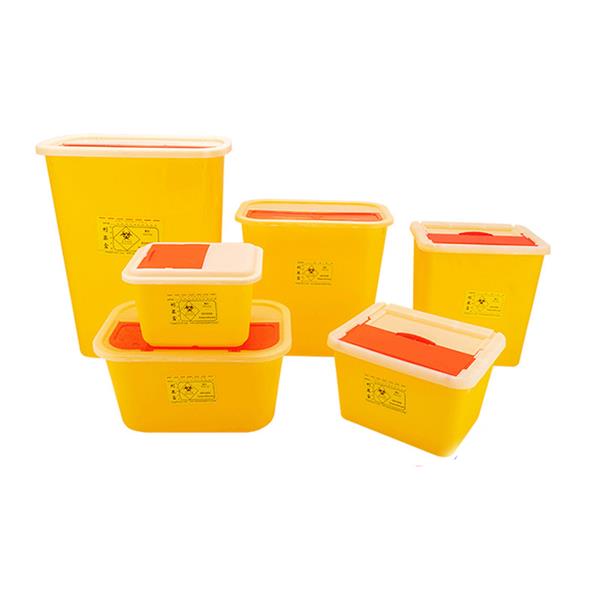
Our JINYE brand offers a range of sizes and capacities to fit the needs of different healthcare providers and facilities everywhere. For example, our 1.2-liter container is ideal for smaller healthcare facilities or individual use, while our 64-liter container is suitable for larger healthcare facilities. Our containers are made from high-quality materials such as puncture-resistant plastic and are designed to be leak-proof, ensuring safe and effective disposal.
In terms of convenience, our containers feature easy-to-use lids and handle for safe transportation. We also offer wall-mountable containers for easy accessibility and space-saving solutions. Additionally, our containers are labeled in compliance with regulatory requirements for easy identification and proper disposal.
When it comes to cost-effectiveness, our JINYE brand offers competitive prices compared to other leading brands in the market. Our containers are designed for long-term use and are built to withstand frequent disposal without compromising safety or durability. Investing in our containers can ultimately save your facility money in the long run by reducing the need for frequent replacements.
Overall, JINYE is committed to providing high-quality Medical Consumables that meet the needs of healthcare facilities and pharmacies while prioritizing safety, convenience, and cost-effectiveness. We are confident that our products will exceed your expectations and help you maintain a safe and efficient disposal and delivery system.

Conclusion
In conclusion, proper sharps disposal is crucial for protecting the public, healthcare workers, and the environment from the risks associated with medical waste. By choosing the best sharps container, healthcare facilities can ensure the safe and effective disposal of sharps and compliance with regulations.
Remember to consider the capacity, durability, leak-proofing, temperature, and incineration requirements, ease of use and maintenance, and cost-effectiveness when selecting a sharps container. With these factors in mind, JINYE offers a range of high-quality Medical Consumables that meet all of these requirements.
Let’s work together to make our world a safer and healthier place by taking responsible actions to properly dispose of medical waste. By following the tips discussed in this article, we can make a positive impact on the environment and promote public health. Thank you for joining us in this important endeavor.
